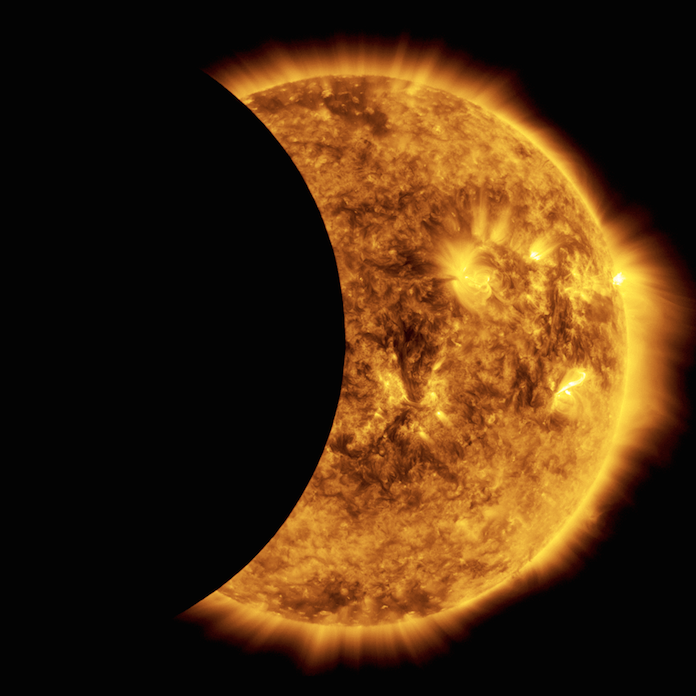NASA Craft Catches Partial Solar Eclipse As Moon Passes By The Sun

NASA's Solar Dynamics Observatory spends its time in space studying the sun and its conditions, as well as it can without getting too close to the giant star. The Observatory is a satellite equipped with instruments to measure the sun and its atmosphere. Specifically it measures the magnetic field, the inner corona, the variance in solar cycles and more.
On Thursday, the satellite captured an incredible view of the moon partially eclipsing the sun. During the point of most coverage the moon was covering almost 90 percent of the sun. The images are clear because the moon has no atmosphere to make the edges appear blurry as it passes the sun. However, if you look very closely at the edge of the moon you can see small divots and craters where the moon's surface is dented and the sun's light comes through.
Read: Jupiter Photos: NASA's Juno Mission Reveals New Discoveries About Planet
The goal of SDO is to measure space weather, particularly the conditions on the sun that can disrupt astronauts and our satellites. The sun's magnetic fields are of special interest to researchers working on the project. But in the process of doing this, it captures some pretty stunning images. The craft collects enough data every 36 seconds to fill a full CD and has no recording system on board, so it has its own ground system that it constantly relays information to. It rotates Earth in geosynchronous orbit, meaning it stays in one spot in the Earth's orbit, so that it can be right above the system it reports to, says NASA. The sun's activity is key to our everyday lives and the closer researchers can study it the better they'll understand it.
The sort of event that occurred Thursday is called lunar transit. That means the moon passes in front of another celestial object. A transit is when any object passes any other celestial object. Thursday's transit took about a little less than an hour. So really, eclipses are just a type of transit, says NASA. They can be helpful because with the light from a star dimmed it's easier to see the goings on of other parts of space sometimes.
Read: Total Solar Eclipse August 2015: What It Is, When And How To See It
In a few months there will be another transit. It will happen the same day there will be a total solar eclipse here on Earth. The satellite will only cover part of the sun as it passes by but on Earth there will be a full eclipse visible in much of the United States. This event will occur on August 21.
It's never safe to stare right at the sun so it's important to do some research before attempting to view the eclipse later this summer. You may also want to check what time you can expect to see it in your area and whether or not it will even be visible.
© Copyright IBTimes 2024. All rights reserved.





















